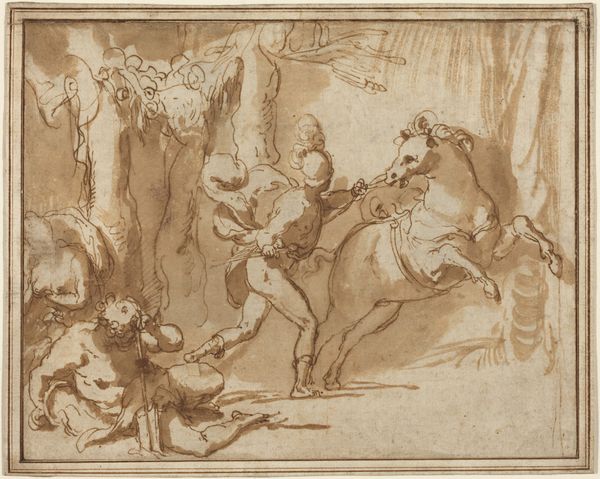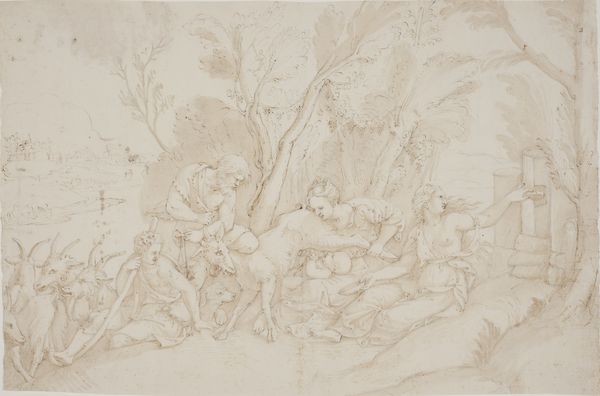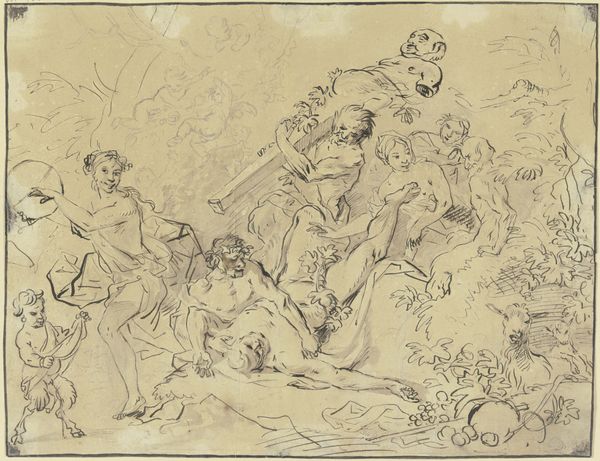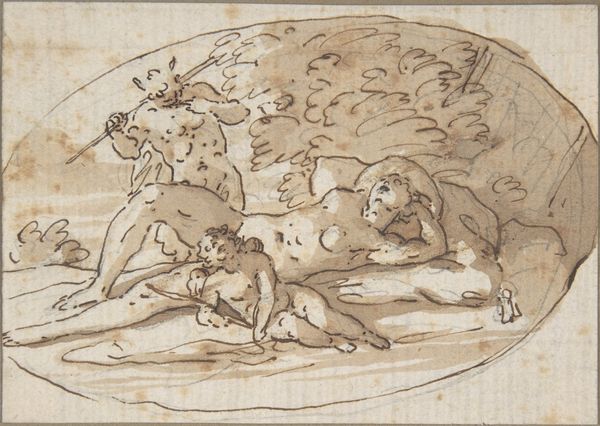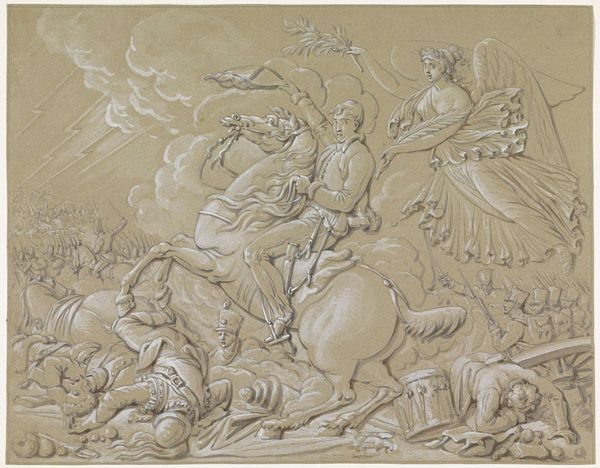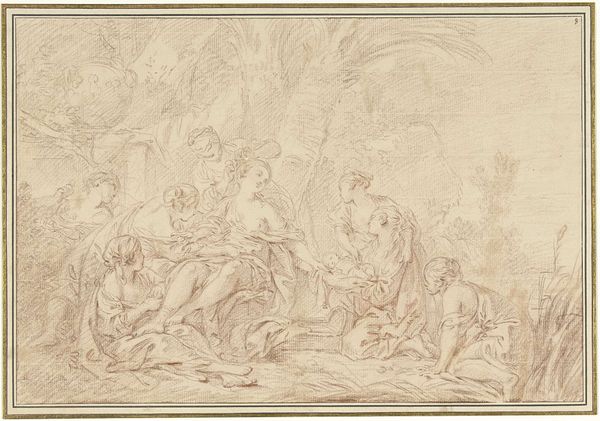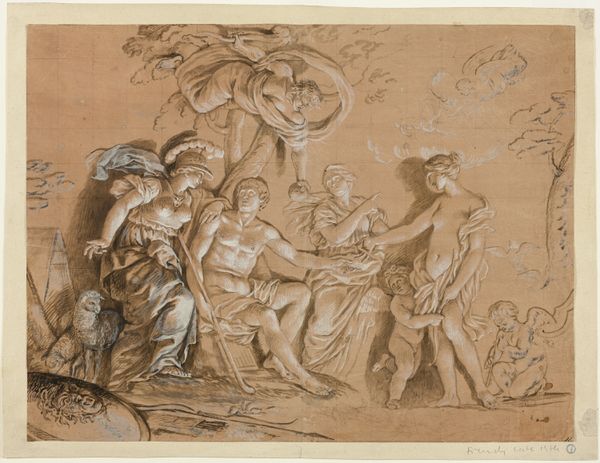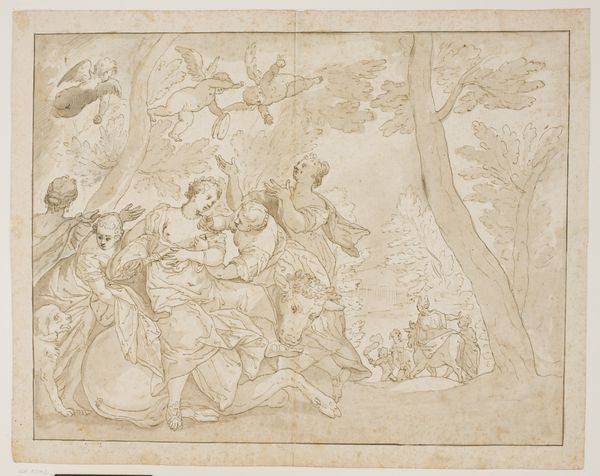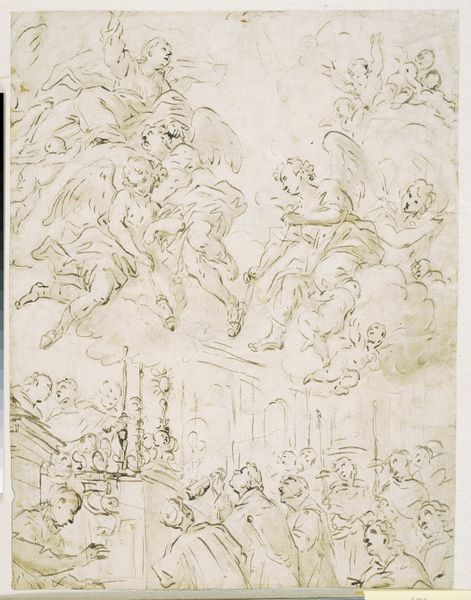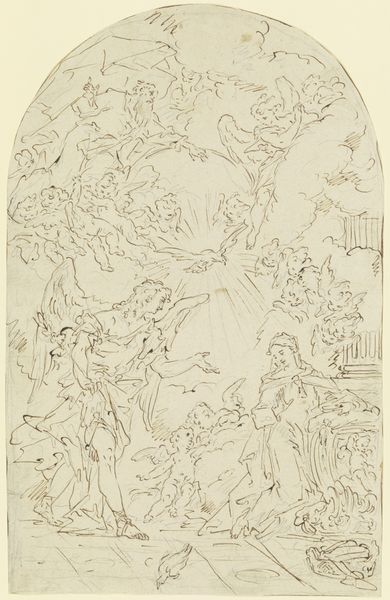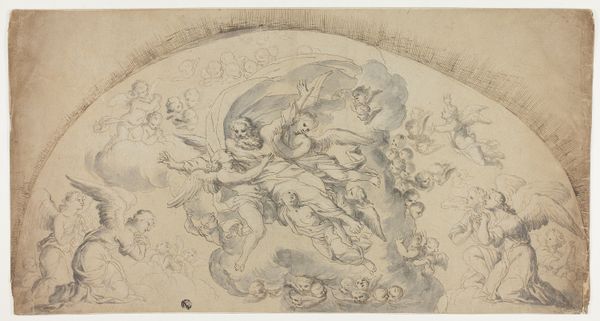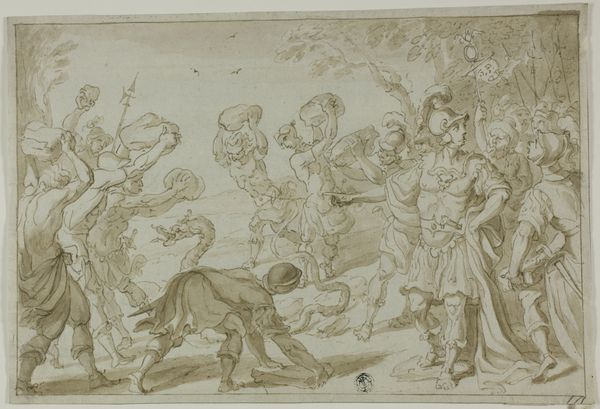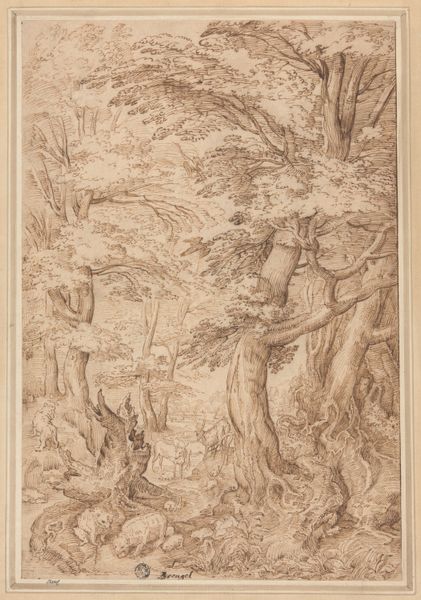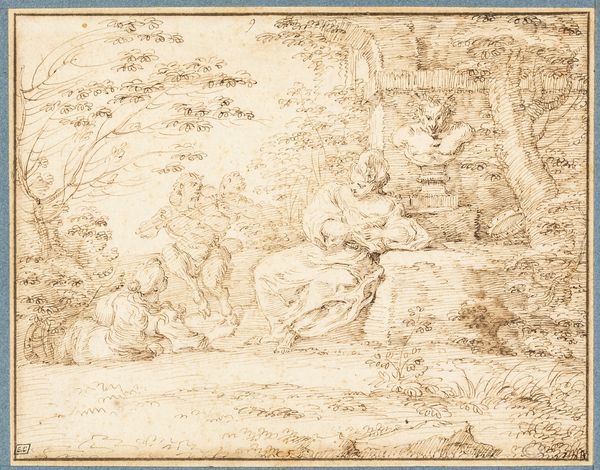
drawing, ink
#
portrait
#
drawing
#
ink painting
#
landscape
#
figuration
#
ink
#
watercolor
#
rococo
Dimensions: height 139 mm, width 198 mm
Copyright: Rijks Museum: Open Domain
Jacob de Wit created "Lente," or "Spring," a pen and brush drawing, during the height of the Dutch Golden Age. As the name implies, it is a representation of spring. During this time, the Netherlands was a major economic power and art production flourished, often reflecting the values and ideals of the wealthy merchant class. De Wit, known for his ceiling paintings and trompe-l'oeil effects, frequently incorporated mythological and allegorical figures in his work. The cherubs, or putti, frolic and gather flowers, embodying themes of innocence, beauty, and renewal. The statue reminds us of the classical ideals that were revered during the period. However, this celebration of youth and beauty existed in a society marked by strict social hierarchies and limited opportunities for many. The very concept of an idyllic, innocent spring could seem dissonant to those living in poverty, or without freedom. This piece offers us a glimpse into the aesthetic preferences and cultural values of the Dutch elite, while also inviting us to reflect on the complexities and contradictions of the society that produced it.
Comments
No comments
Be the first to comment and join the conversation on the ultimate creative platform.
